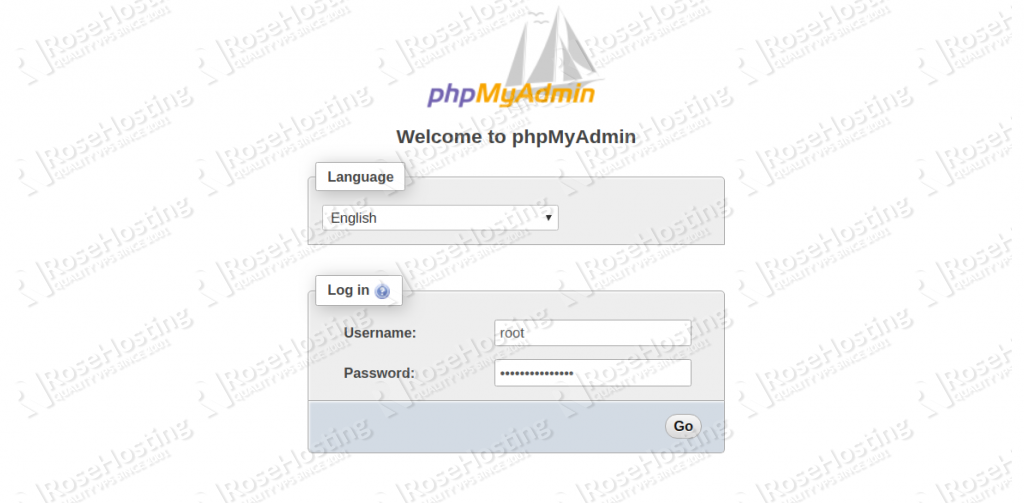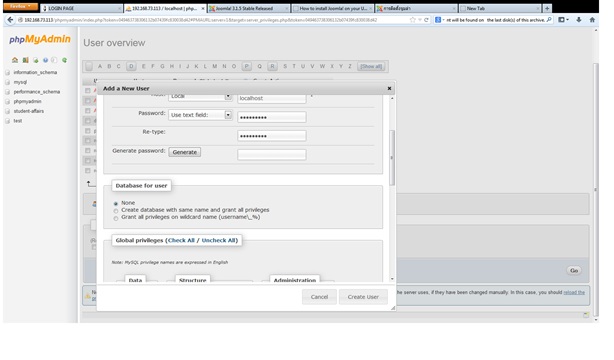

- #Phpmyadmin install in ubuntu 20.04 how to
- #Phpmyadmin install in ubuntu 20.04 password
- #Phpmyadmin install in ubuntu 20.04 download
How To Install and Secure phpMyAdmin with Nginx on an Ubuntu 20.04 Server. and further configuration can be done if you proceed with the digitalocean referrence.ĭrake, M., & Heidi, E.
run sudo ln -s /usr/share/phpmyadmin /var/www/your_domain/phpmyadminĪs for my personal experiece on this part there is always an error so try using the method provided by digitalocean for the most part it works all the time but it is advisable to connect to your server via ssh using putty because the pop-ups do not appear on most console applications. #Phpmyadmin install in ubuntu 20.04 password
You will be asked to define a new password for the phpmyadmin MySQL user, but because this isn’t a password you need to remember you can leave it blank and let phpMyAdmin randomly create a password. This will set up the internal database and administrative user for phpMyAdmin. Next, you’ll be prompted whether to use dbconfig-common for configuring the application database.

Instead, press TAB to highlight the and then press ENTER to continue the installation process. However, because you are using Nginx as a web server you shouldn’t choose either of these options. phpMyAdmin can automatically make a number of configuration changes to ensure that it works correctly with either of these web servers upon installation. During the installation process, you will be prompted to choose a web server (either Apache or Lighttpd) to configure.
#Phpmyadmin install in ubuntu 20.04 download
You can install phpMyAdmin by using APT to download the phpmyadmin package from the default Ubuntu repositories.
Now go to your browser and access your server’s domain name or IP address, as listed within the server_name directive in your server block configuration file: server_domain_or_IP. Paste in the following bare-bones configuration:įastcgi_pass unix:/var/run/php/ Here, we’ll use nano : sudo nano /etc/nginx/sites-available/ your_domain Then, open a new configuration file in Nginx’s sites-available directory using your preferred command-line editor. Next, assign ownership of the directory with the $USER environment variable, which will reference your current system user: sudo chown -R $USER : $USER /var/www/ your_domain. Create the root web directory for your_domain as follows: sudo mkdir /var/www/ your_domain. This will connect to the MySQL server as the administrative database user root, which is inferred by the use of sudo when running this command. This will remove some anonymous users and the test database, disable remote root logins, and load these new rules so that MySQL immediately respects the changes you have made. For the rest of the questions, press Y and hit the ENTER key at each prompt. Keep in mind that if you enter 2 for the strongest level, you will receive errors when attempting to set any password which does not contain numbers, upper and lowercase letters, and special characters, or which is based on common dictionary words. If you answer “yes”, you’ll be asked to select a level of password validation. Īnswer Y for yes, or anything else to continue without enabling. This will ask if you want to configure the VALIDATE PASSWORD PLUGIN. When prompted, confirm installation by typing Y, and then ENTER. MySQL is a popular database management system used within PHP environments. now try Now that you have a web server up and running, you need to install the database system to be able to store and manage data for your site. Once the installation is finished, the Nginx web server will be active and running on your Ubuntu 20.04 server. 
When prompted, enter Y to confirm that you want to install Nginx. Make sure you have administrator previleges: sudo -s.second is NGINX is easier to configure and maintain than APACHE because most of nginx runned websites are repairable by just some line in nginx it self while APACHE referrences a lot in order to fix or maintain a certain aspect of the stack. why choose NGINX then well for the first reason is preferrence, maybe for you it's easier to use APACHE because you are trained in that environment but as a preference of mine i use NGINX. Why choose LEMP stack instead of a LAMP one?įor those who are wondering what is the difference between a LEMP and a LAMP stack for the main part it's their web server LEMP uses NGINX (Engine-x) while LAMP uses APACHE.







 0 kommentar(er)
0 kommentar(er)
